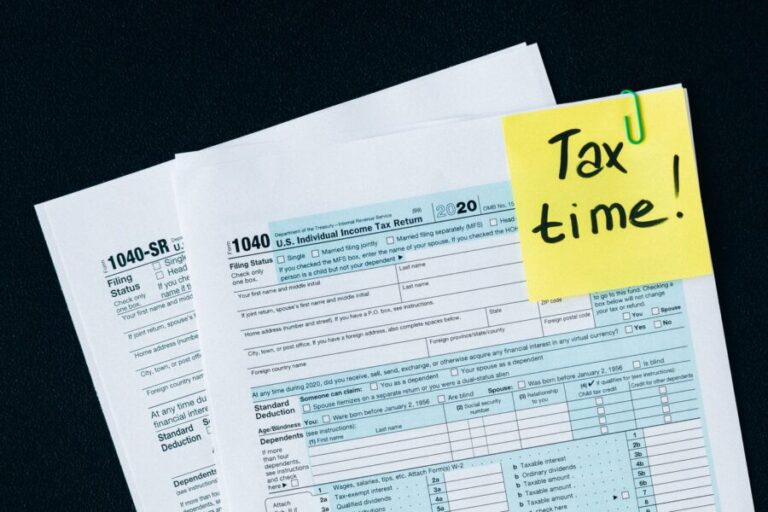Updated October 5, 2021
There are a number of ways that Americans around the country power their homes, but one source of energy is definitely everywhere, at least for half the day: the sun. And now, homeowners can take advantage of the Federal Solar Tax Credit to get a serious tax break while also positioning themselves to save on their energy bill moving forward.
How to Claim Solar Tax Credit
- Improve a Qualified Home
- Own Qualified Equipment
- Determine Solar Tax Credit Amounts
- File IRS form 5695, etc
The official name of the Federal Solar Tax Credit is the Investment Tax Credit (ITC). This tax credit was part of the Energy Policy Act of 2005 during the Bush administration. This act incentivized alternative forms of energy, such as those that avoid creating greenhouse gases. The ITC itself was set to expire just two years later, but it became an incredibly popular program, so Congress kept extending the expiration date. It will remain in effect until 2024.
One of the more commonly accessible forms of clean energy or renewable energy is solar power, especially for residential homeowners. A solar energy property is recognizable for the solar array on its roof or on its grounds. These black panels are filled with solar PV (photovoltaic) cells, which convert sunshine into usable electricity. You may have already noticed a few solar customers in your neighborhood. This is because the solar industry has grown in recent years, facilitated by the ease of installing a solar panel system and perhaps a solar incentive offered by state and local governments.
Certainly, there is the solar incentive of energy efficiency to lower one’s monthly utility bill by supplementing their imported electricity with ones that are home-grown. And in some cases, if a solar property produces more electricity than needed, a net metering program may offer payment or credit for electricity added to the grid.
While these benefits all sound great, you might be wondering if a solar project isn’t a little bit too ambitious for a residential property owner. In truth, solar installation can cost a pretty penny, upwards of thousands of dollars, depending on the size of the property and its electricity needs. But to make a solar investment more appealing to the average taxpaying homeowner, the federal government has created a federal investment tax credit or renewable energy tax credit that puts some of their initial investment back into their pocket right away in the form of a tax deduction.
What is the Federal Solar Tax Credit?
The Federal Solar Tax Credit allows property owners to write off a percentage of the cost of installing a solar energy system on their federal tax return. Keep in mind that this is for both residential and commercial property, so that includes homeowners and property owners with residential rentals or commercial properties. As mentioned, while a renewable energy project might seem likely for the owner of a strip mall or an apartment building, it seems less likely, at first glance, for a residential property owner. Solar installation is a sizable expense. But as mentioned, the Federal Solar Tax Credit presents an incentive in the form of lowering the homeowner’s taxable income for that year, or even over a period of years if the tax break they get exceeds their tax liability.
While this tax credit is still in effect, one thing that has changed over time is the percentage of system installation costs that a property owner can write off. Initially, it was 30 percent. Currently it is 26 percent. And moving forward, in 2023 it will be reduced to 22 percent, and 10 percent in 2024. What this means for homeowners looking to score some serious tax savings is that the time to install solar panels on your home is now. However, even if a homeowner does not have the capital to install solar panels or the credit to obtain, say, a HELOC to fund such a renewable energy project, there will still be that 10 percent incentive, at least, in the future. Moreover, there is no cap or minimum to the ITC. Even installing a few solar panels will yield you a tax break corresponding to 26 percent of their cost, and the panels will help you reduce your monthly utility bill.
Also remember that this tax write off is just for your federal taxes, not state taxes. Some states, however, also offer tax incentives for residents who install solar energy systems. Moreover, some states offer tax credits and even performance-based incentives (PBIs), which pay property owners a credit for each and every kilowatt-hour generated by their solar equipment. In some municipalities, the local government might even offer cash rebates.

How to Claim Solar Tax Credit
Improve a Qualified Home
If you’re looking at the benefits of the ITC for your own property, Section 25D of the Internal Revenue Code defines eligibility regarding the solar tax credit.
The property you improve needs to be one you own, not one you rent. It must be a property that you live in for at least part of the year, so vacation homes are eligible—but a commercial property is not pertinent here, as it is covered by Section 48. In any case, this residence can include a house, houseboat, condominium, cooperative, mobile home, and prefabricated home. Keep in mind that if you are attaching solar panels to a condominium, you will likely need to consult on this move with the association and obtain their approval. A similar concern might apply to a residential property set in a suburb managed by an HOA.
Own Qualified Equipment
In order to claim the Solar Tax Credit, you must own, not lease, the solar energy system you are installing. You will want to make sure of this up front, because many companies that install solar equipment lease it to homeowners, which allows them to claim tax credits for their business. If you want to claim the benefit of PBIs, cash rebates, or state tax credits, you should also check with your state and local government to see if there are any requirements regarding solar equipment, such as that it be made in the state in order to obtain local solar tax credits.
The IRS will not be checking to see the quality of the solar system you set up, but keep in mind that a better quality solar system will be easier to maintain and more cost effective over the long run.
Determine Solar Tax Credit Amounts
You will need to take a look at the cost of installing the solar energy system, and that will include the cost of the solar panels themselves. Luckily, there is no cap on the ITC, so whatever dollar amount it costs you to install the solar panels, you can deduct 26 percent of that from your taxable burden on your federal tax return.
For example, if solar panel installation costs you $10k, you will be able to write off $2,600. You can also space the write off over the course of several years, which is beneficial if your tax credit is larger than the amount of taxes you owe for a given year. On a related note, you might also consider seeing if you can incorporate the solar panel equipment itself into a cost segregation analysis that allows you to write off their depreciation over the years.
File IRS form 5695
IRS Form 5695 is specifically for documenting your tax savings for the solar tax credit. Incidentally, the form also allows you to write off wind energy and geothermal energy. You will combine the costs of installation and any alternative energy systems on your property and multiply that total by 26 percent to find your tax benefit.
Part II of the form also includes lines to calculate rental property tax deductions for installing other energy saving measures on your property. If a solar installer is going to fill out IRS Form 5695 and get a solar credit for that tax year, they may consider performing other types of remodeling on the home to improve its energy efficiency, such as replacing old appliances with EnergyStar efficient devices, and/or updating doors and windows. You can recoup the cost of some of these energy related investments against the tax year as well.
Once these amounts have been calculated, you will carry them over to Form 1040, also referred to as Schedule C.
When Does the Federal Solar Tax Credit Expire?
The ITC is not set to expire until 2024, but remember that with time it will eventually go down to 10 percent, and that even in 2023 it will already have gone down to 22 percent.
Right now is the perfect time to take advantage of this program, even if Congress continues their precedent of extending it into the future, because there is no guarantee that the 26 percent rate would be reinstated. Of course, there are always plenty of ways to answer the question of how to pay less taxes, but taking what you can, when you can, is always a good rule of thumb.
In addition to the solar ITC, there may be other local and state tax credits, cash rebates, and net metering opportunities that will not expire in 2024, so even if you haven’t completed your solar installation by then, it might still be well worth it to perform.
Now is the Time to Install Solar to Take Advantage of the Solar Tax Credit
Any tax advisor will tell you that the government creates tax credits to motivate taxpayers to behave in a certain way, whether it’s giving to charity, purchasing a home, or installing solar panels on the roof of their residence. Often these actions benefit the greater community as a whole, so the government has its own motivation to provide incentives.
Renewable energy or clean energy is once such area, and the government provides an incentive for homeowners to bite the bullet in terms of paying to install solar energy (or other forms of renewable energy, such as wind and geothermal), which otherwise might be cost prohibitive, by providing these homeowners with a tax credit.
Is installing solar panels worth it for the tax credit? According to some estimates, the average cost of installing solar panels on a personal residence was around $16,860, which would currently result in a tax credit of $4,618. Of course, that means you still have to pay thousands of dollars to have solar energy equipment installed, so a better question might be to consider whether or not the energy savings are worth it over time. According to some estimates, your solar panels will pay for themselves in three years. The answer really depends on your location, how much energy you use, and your energy bill. No matter the answer to any of those questions, the tax savings that solar panel installation can provide you with don’t seem to have a cloud in sight.
If you’re interested in learning more about tax credits and how they can be beneficial for lowering your tax obligations, join our Tax Tuesday Webinar!
Bonus Video
Free Strategy Session with an Anderson Advisor
Receive a detailed risk assessment to assist in lowering problem areas that could wipe out all of your assets with one wrong move. Speak with an Anderson Professional Advisor to get your FREE Strategy Session. Limited-Time offer: FREE (a $750 value.)















